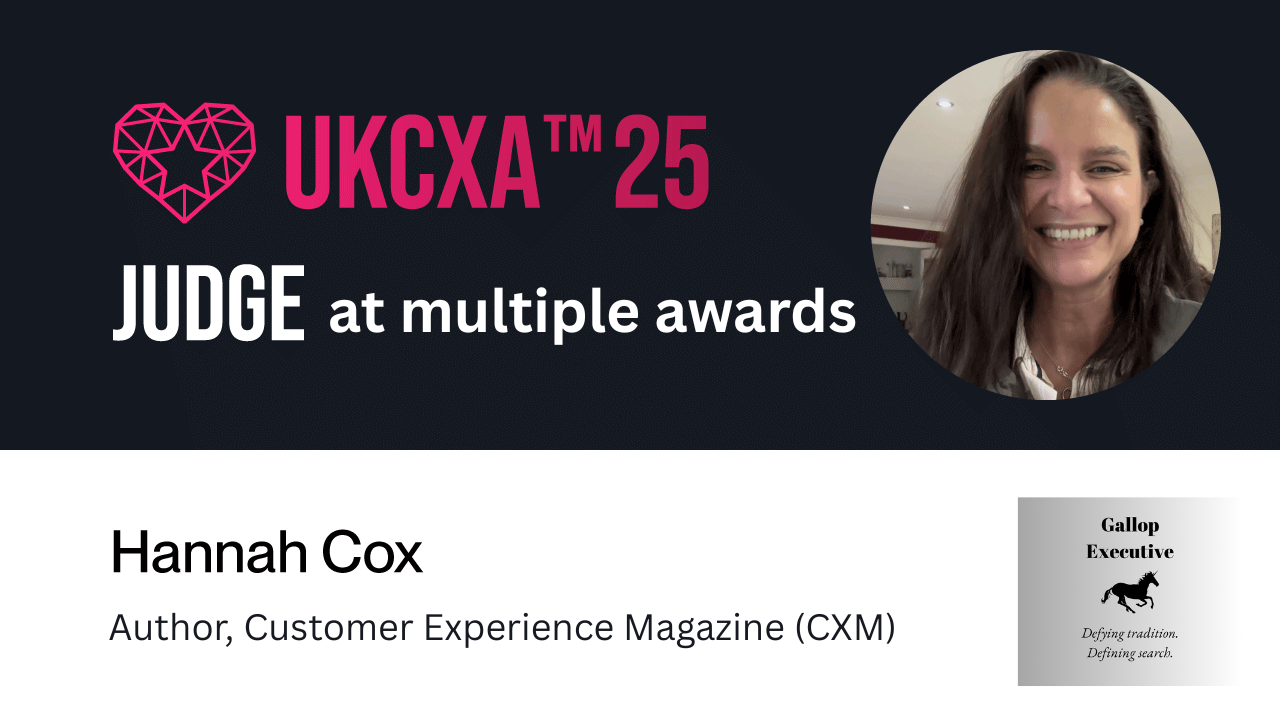
Hybrid work: Trends and insights from business leaders
Written by Hannah Cox for Customer Experience Magazine (CXM).
A recent survey by Gallop Executive of over 50 engaged business leaders at director level in the customer space has provided valuable insights into current workplace models.
The results indicate that only 12% of businesses operate on a fully remote basis, 24% are now almost fully office-based (4 days per week in the office or more), with the preference being a hybrid approach at 64% (2-3 days in the office).
It has been widely publicised that global corporations such as Amazon, Citibank, IBM, JP Morgan and Goldman Sachs have mandated a companywide, fully office-based presence, reflecting a shift in broader industry trends both in the UK and globally.
Almost two-thirds of organisations prefer a flexible hybrid model, typically requiring employees to work in the office two to three days per week. However, there are recruitment challenges when competing for talent with organisations that offer fully remote roles because, overall, a fully flexible approach to work is preferable.
This is particularly evident in lower-paid positions, such as entry-level roles, or supporting a customer contact centre, where employees prioritise eliminating commuting costs.
In financial services, technology and public sector roles, workers are being encouraged to return to offices, even though this may impact their ability to attract and retain talent.
Hybrid trends around the world
Regional differences also play a significant role in workplace policies. More companies are mandating five days in the office in the United States. American workers ‘love working from home’ according to a chief revenue officer of a global fintech firm. The organisation mandates two days in the office if the commute is less than 30 minutes, one day a week if the commute is under one hour. If the employee is further than an hour’s commute, office work is on an as required basis.
In the UK, many businesses enforce two to three office days per week. Hybrid working is now the norm for over 25% of the country’s workforce. Some offer fully remote options based on the type of role and distance from an office.
Nuances around hybrid roles
Read the full article in Customer Experience Magazine here
Where does employee experience sit within an organisation? Who owns it?
Written by Hannah Cox for Customer Experience Magazine (CXM).
Employee experience (EX) has become a central focus in today’s fluid business world, not just as a concept, but as a continuous, evolving commitment to the people who bring businesses to life. But as organisations strive to embed EX into their core strategies, one key question keeps surfacing — where does employee experience sit? Who actually owns it?
The simple answer? It depends.
The reality? Everywhere, and nowhere exclusively. Many business leaders agree that HR (or people teams) are the natural home for employee experience. HR brings the frameworks, policies, tools, and structure — owning the strategy and often coordinating the action.
HR can’t carry the load alone
In many organisations, HR chairs cross-functional groups — like the aptly named ‘culture carriers’ — that bring together key influencers to shape and drive employee experience forward.
But HR alone can’t carry the weight. As one leader that I have recently spoken to put it, “HR can own the survey and write the policies, but employee experience is inseparable from culture, and no one function can own that.”
Senior executives, operational leads, marketing and communications, finance, and even corporate social responsibility (CSR) functions all play vital roles. One business leader that I know well, with responsibility for over 2,500 staff described how their team includes a colleague experience manager and an engagement manager, with strong dotted-line collaboration into HR and communications. This structure allows them to align with the business’s strategic goals while retaining the agility to drive their own initiatives.
Employee experience as a mindset
This approach reflects a growing recognition that EX is not just a program or department — it’s a mindset. It’s embedded in leadership behaviour, communication style, recognition culture, learning opportunities, and how work-life balance is supported.
Here are five pillars that have the greatest impact on how employees feel at work: leadership and communication, recognition and rewards, personal and professional growth, the work environment, and flexibility.
Culture drives employee experience
Read the full article in Customer Experience Magazine here